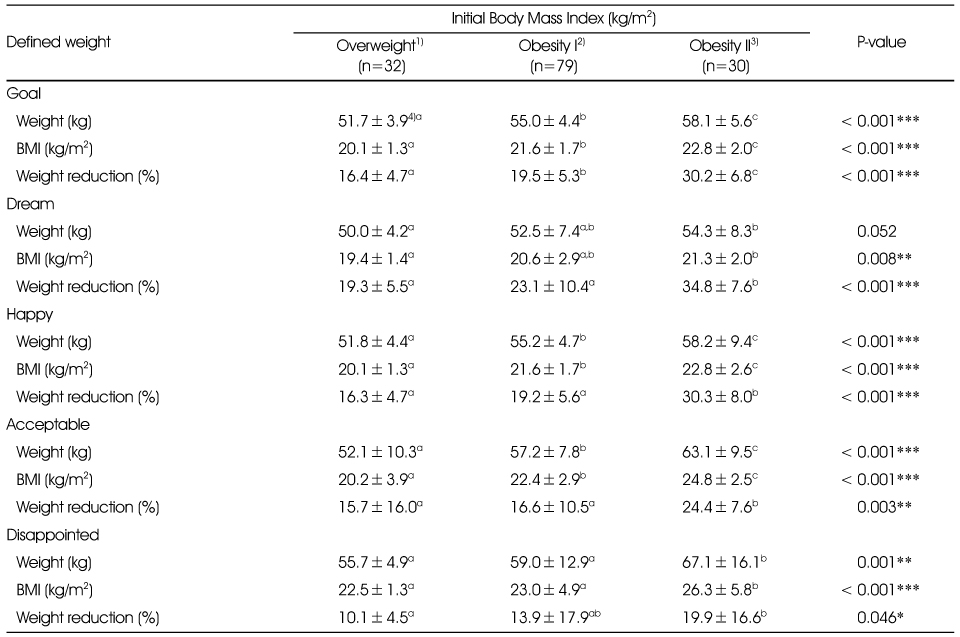The Effect of Obesity-Related Quality of Life on selecting a Goal for Weight Management in Overweight and Obese Patients
Article information
Abstract
Objectives
Obesity is known to influence physical and mental health as well as the general quality of life. The aim of this study was to evaluate the effect of obesity related quality of life on selecting a goal for weight management in overweight and obese female patients.
Methods
A total of 140 overweight or obese (Body mass index 23 kg/m2) female outpatients aged ≥ 20 and ≤ 60 years from one clinic participated in this study. Patients' desired weight (goal weight, ideal weight, satisfactory weight, acceptable weight and disappointed weight) and obesity related quality of life measures were evaluated. Univariate and multivariate analysis were performed to evaluate the effect of obesity related quality of life on goal weight reduction (%) and goal body mass index (BMI).
Results
Mean BMI of overweight group, mild obesity group and severe obesity group were 62.0 ± 4.8 kg, 68.5 ± 5.5 kg and 83.5 ± 9.6 kg, respectively. Mean weight loss expectations of the three groups were 16.4 ± 4.7%, 19.5 ± 5.3% and 30.2 ± 6.8%, respectively and goal weight was significantly different among the three groups. Severe obesity group had a lower total quality of life score including physical, work-related, daily living domains than overweight or mild obesity groups. In univariate and multivariate regression analysis, psychosocial domain of quality of life had an effect on goal weight reduction (%) and goal BMI.
Conclusions
The results of this study demonstrated that the obese patients with poorer quality of life and psychosocial health tended to choose higher goal weight reduction and lower goal BMI.
Appendices
Supplements
Supplement 1
Questionnaires of Korean Obesity-related Quality of Life (KOQOL) scale. These questions ask about how you have been feeling in the last month. Answer every question with a tick() to indicate your response






